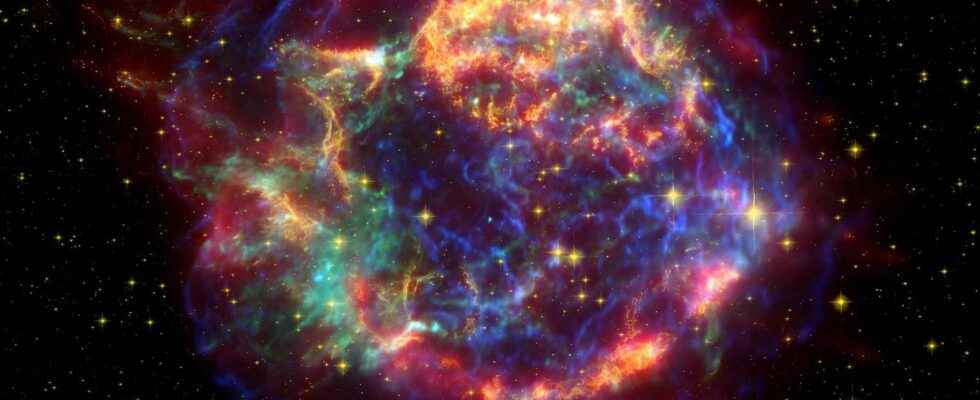Cassiopeia A. This is probably what remains of one of the most famous supernova explosions in our Universe. And astronomers tell us today that this nebula does not extend uniformly. Blame it, probably, on a collision.
Cassiopeia A is some 11,000 light years from our Earth. She’s what’s left ofsupernova explosion of one supergiant star red whose light reached us around the 1670s. At least that is what the researchers deduce from their analyzes because Cassiopeia A is not visible to theeye naked. And the resolution astronomical instruments of the time was also not sufficient to observe it. What we know in any case is that at the heart of the nebula formed by the supernova explosion of this supergiant star, there is an insane temperature of some 30 million degrees Celsius.
The astronomers have also already been able to establish that this nebula extends from the explosion of the star which gave birth to it to a speed average between 4,000 and 6,000 kilometers per second. In fact, Cassiopeia A is about 16 light-years across today. Really ? Data collected over almost 20 years by theChandra X-Ray Observatory today seem to want to stir up trouble.
From researchers from the University of Amsterdam (Netherlands) have indeed just observed something astonishing concerning Cassiopeia A. On its western side. Or the right side of the images, if you prefer. The inner regions of the nebula, instead of expanding, appear to be moving inward. Moreover, the measurements that astronomers have taken of the acceleration — or deceleration — of the external shock wave show that, in the western part, it is accelerating rather than decelerating.
A collision with matter ejected by the star itself?
This amazing movement recoil can, according to astronomers, be explained in two ways. By a kind of emptiness in the material even of the supernova created by a very brief episode of extreme mass loss or by a collision of the nebula “with something”. And the models seem to want to privilege this last track because it would also explain the observed acceleration of theshock wave.
Recent work by Palermo observatory researchers (Italy) point to a collision of the star’s remnants with a denser region of gas and dust. Or even, a kind of shell — partial in this case — of particles. This could have been created by the star itself, already at the end of its life, but before its supernova explosion when it blew a wind gas particle constant.
The researchers regret not having information concerning the star which gave birth to Cassiopée A. Its size or its spectral type, for example, could clarify the question. But maybe they will still be able to learn more very soon. Thanks to James Webb Space Telescope who could look infrared on Cassiopée A before the end of this year.
Interested in what you just read?
